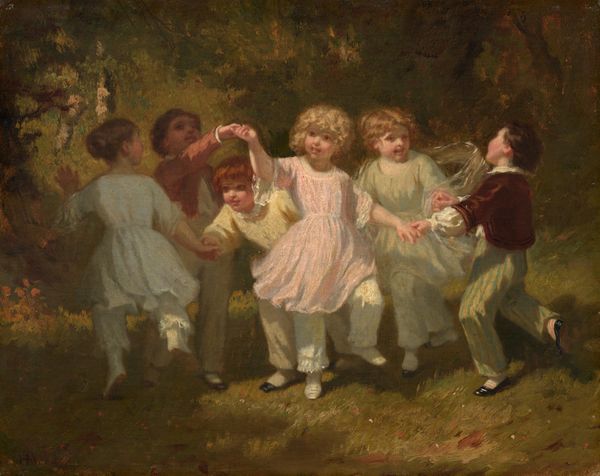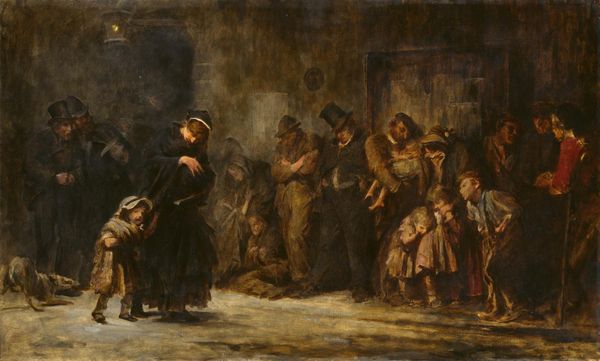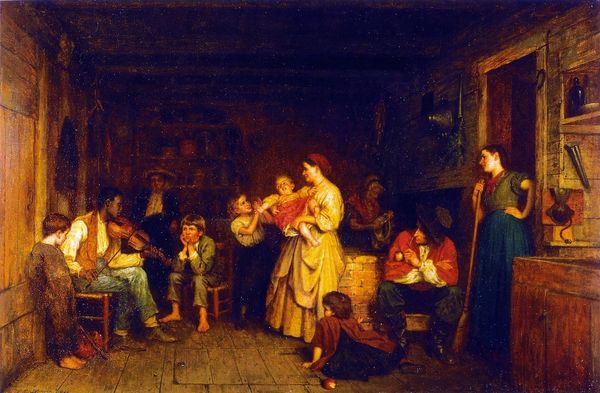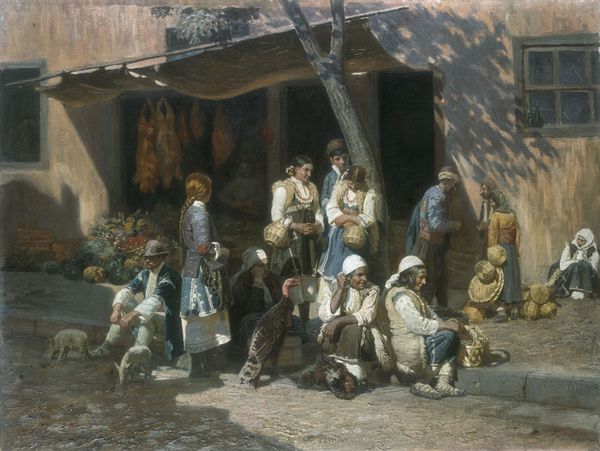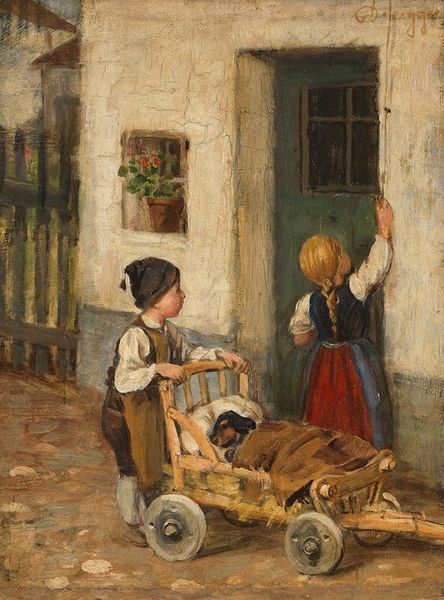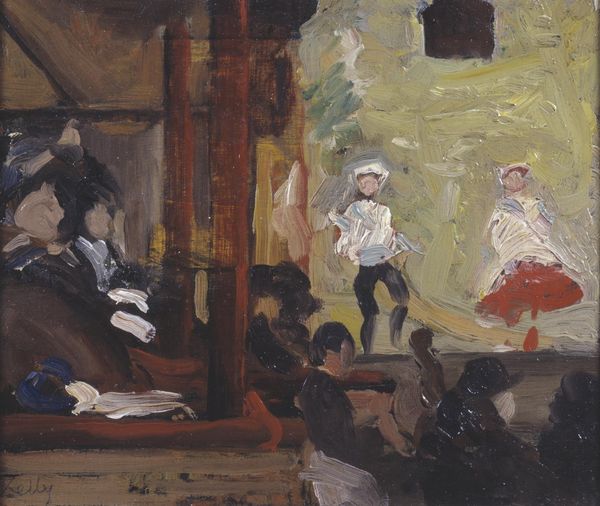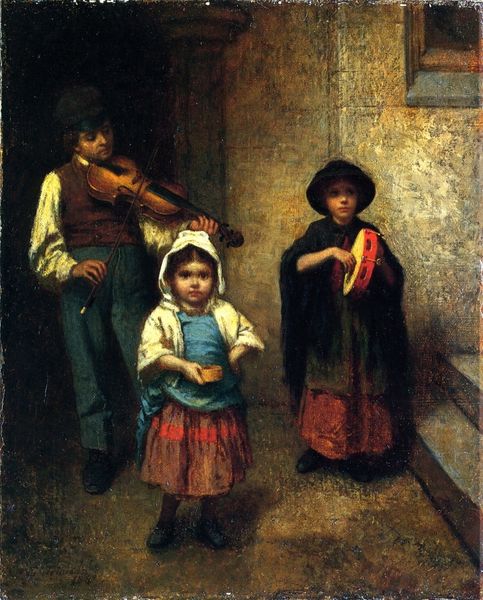
painting, oil-paint
#
figurative
#
painting
#
impressionism
#
oil-paint
#
landscape
#
figuration
#
oil painting
#
painting painterly
#
genre-painting
Copyright: Public Domain: Artvee
Editor: So, this is Max Liebermann’s *Kleinkinderschule* from 1875. It's an oil painting, depicting a group of children with a woman, presumably a teacher. It feels... unidealized, very matter-of-fact. What do you see in this piece, in terms of its historical context? Curator: The "unidealized" feel is key. Liebermann, along with other Realist and early Impressionist artists, was pushing against the academic traditions that often prettified or historicized subjects. Think about what’s *not* depicted: heroic figures, grand narratives, even idealized beauty. Instead, we have a snapshot of everyday life, presented without romanticism. Consider the rise of social realism and its interest in representing the lives of ordinary people, especially children. What social shifts might have influenced this? Editor: Well, increased urbanization? Industrialization meant more children in cities, and with that came a greater awareness – or maybe a reckoning – with their living conditions and education. Curator: Precisely! And that’s where the socio-political aspect comes in. Representations of childhood increasingly became tied to broader discussions about education reform and social mobility. Where do you think the location of this scene could be? Does it look like a purpose-built school, or something else? Editor: It almost looks… makeshift. Maybe a repurposed room? Which, I guess, also speaks to the realities of early childhood education at the time. Curator: Exactly. Liebermann’s choice to depict this perhaps highlights the state of early childhood education accessible to the public. The children aren't standardized, they are all individuals. Does the painting give voice to social discourse surrounding education in that moment? Editor: Definitely. Seeing it that way shifts my understanding completely. It is more than just an image, but commentary on education and socio-political setting. Curator: It reminds us art is often a product of its time, shaped by and contributing to the conversations happening around it. Editor: Thanks, I'll definitely be keeping an eye out for that context from now on.
Comments
No comments
Be the first to comment and join the conversation on the ultimate creative platform.

